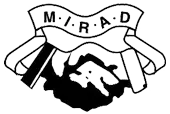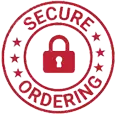Dont Get Caught Out Lesser Known DVLA Number Plate Rules and How to Avoid a 1000 Fine
Reg Plates ArticleDont Get Caught Out Lesser Known DVLA Number Plate Rules and How to Avoid a 1000 Fine

Many drivers are aware of the basic requirements for number plates – they need to be clean, undamaged, and clearly display the vehicle's registration number. But the DVLA (Driver and Vehicle Licensing Agency) has a set of more specific regulations that some drivers might not be familiar with. Breaching these rules can lead to a hefty fine of up to £1,000 and even an MOT test failure.
This article dives into the lesser-known aspects of DVLA number plate regulations to ensure you stay compliant and avoid any unnecessary hassle.
Material and Reflectivity:
Reflective Backing: Number plates must be constructed from a reflective material for optimal visibility, especially at night. This allows your vehicle to be easily identified by other drivers and by Automatic Number Plate Recognition (ANPR) cameras used by law enforcement.
Character Contrast: The characters themselves, however, should not be reflective. This is to prevent a confusing glare that could make the registration number difficult to read.
Colour Scheme: The colour scheme is straightforward. The front number plate must display black characters on a white background, while the rear plate uses black characters on a yellow background.
Character Details and Formatting:
Character Clarity: The characters on your number plate must be clean, undamaged, and clearly readable. Any obstructions, dirt, or fading can render the plate non-compliant.
Character Fixings: The characters must be permanently fixed to the plate. Screws or rivets are standard, and any method that allows for easy removal or modification is prohibited.
Character Size and Spacing: There are specific regulations regarding the size and spacing of the characters. Thankfully, reputable number plate suppliers ensure their plates adhere to these specifications.
Number Formatting: Most vehicles registered after September 2001 follow a standard format: two letters, two numbers, a space, and three more letters. Motorcycles registered before 1973 may have a different format, but they still need to comply with the general legibility rules.
Supplier Markings and British Standard:
Supplier Identification: Since September 2021, all number plates must display the supplier's business name and postcode along the bottom center of the plate. This helps authorities track down potentially faulty plates or identify illegal suppliers.
British Standard Mark: The plate must also be marked with the relevant British Standard number. Plates manufactured after September 2021 require the "BS AU 145e" mark, while those made between 1973 and 2021 need "BS AU 145d."
Additional Regulations:
No Background Patterns: The background of your number plate must be plain white (front) or yellow (rear). Any patterns, logos, or decorative elements are strictly prohibited.
Border Restrictions (Optional): If your number plate has a border, it must be a single colour, non-reflective, and no wider than 5mm. It cannot obscure the characters or the supplier markings.
3D Characters (Allowed): While not mandatory, 3D (raised) characters are permitted, but they must still comply with all the other regulations regarding size, colour, and permanence.
Beyond the Basics:
Personalised Plates: While following the core format, you can apply for personalised number plates through the DVLA. However, these plates still need to adhere to all the regulations mentioned above, and the DVLA has the right to refuse any plate deemed offensive or inappropriate.
Flags and Symbols: You can display certain flags and identifiers (e.g., the National Disability Symbol) on your number plate, but their position and size are strictly regulated. Ensure you research the specific requirements before adding any symbols.
Green Flash for Zero-Emission Vehicles: Owners of electric or other zero-emission vehicles can display a green flash on their rear number plate. This is entirely optional but can raise awareness of environmentally friendly vehicles.
Staying Compliant:
Regular Checks: It's a good habit to inspect your number plates regularly for any signs of damage, dirt, or fading. Ensure they remain securely fixed and readable.
Replacement Considerations: If your number plates are damaged, stolen, or no longer meet the regulations, you must replace them with compliant plates from a registered supplier.
Trustworthy Suppliers: Always use a reputable number plate supplier who guarantees their plates meet the DVLA's current standards.
By familiarizing yourself with these lesser-known DVLA number plate regulations, you can avoid unnecessary fines and ensure your vehicle is always legally identifiable on the road. Remember, clear and compliant number plates contribute to overall road safety and allow authorities to effectively
It all started back in 1991 when our love and obsession for private number plates was born.
Since then we have grown steadily over the years to become a leading light in the private number plate industry holding our own stock of high quality number plates and many thousands of registrations we are selling for trade and private clients including many celebrities and sports personalities.


- FREE TRANSFER SERVICE - your paperwork is handled by our trained team
- OVER 30 YEARS EXPERTISE - long established and trusted company
- DVLA RECOGNISED RESELLER - linked directly from the DVLA website
- TRADE ASSOCIATION MEMBERS - MIRAD and CN Guild members


